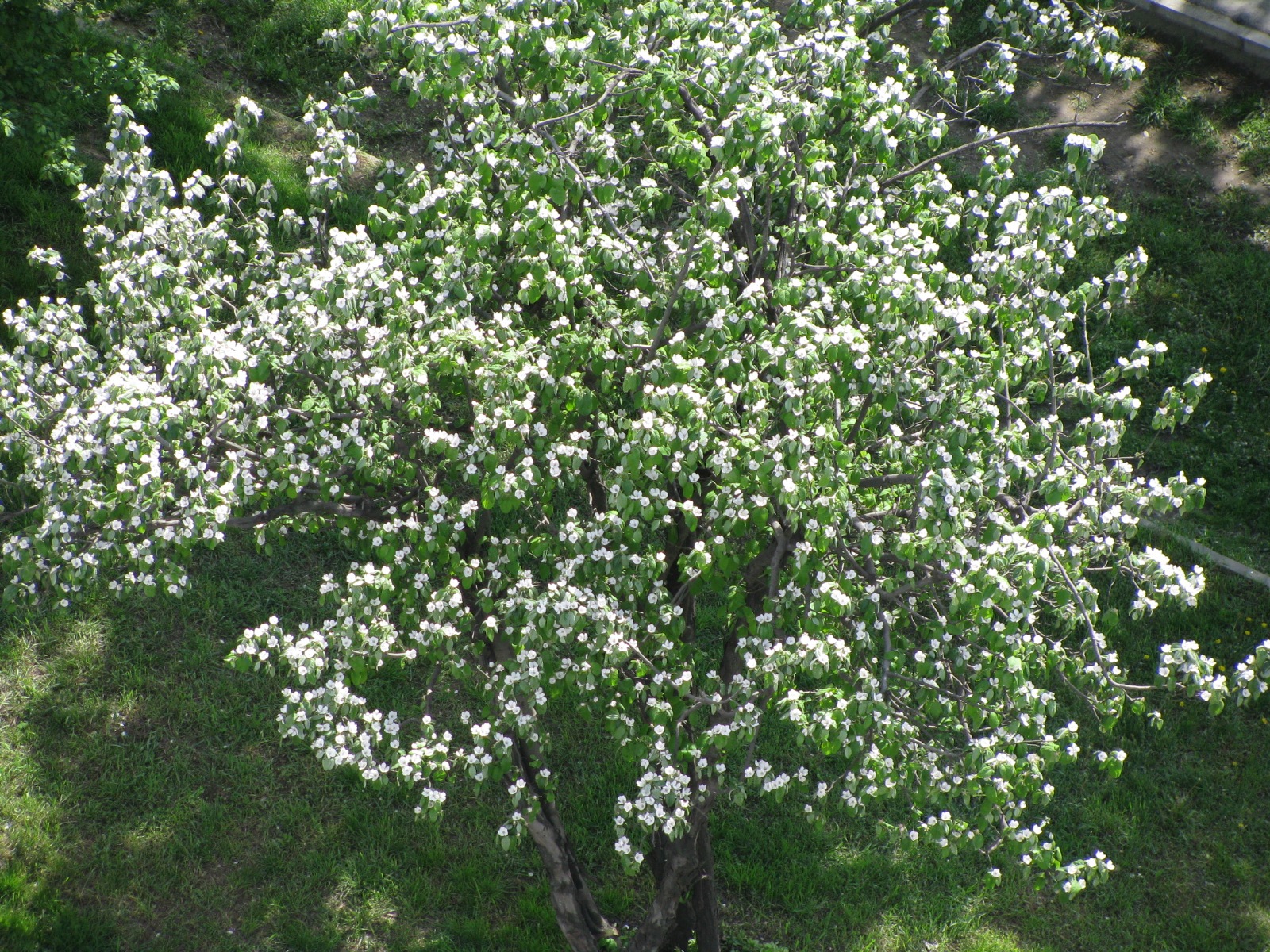Cydonia oblonga
Quince
Species Tolerances
- Drought Tolerance: High
- Shade Tolerance: No
- Waterlogging Tolerance: Low
- Frost Tolerance (trees from warmer climates may be frost tolerant, but their flowers may not be): Yes
- RHS Hardiness: H5
- Optimum Conditions for Growth:
A small tree usually grown as a specimen or in an orchard. It tolerates all but exposed sites. Full sun and moist, well-drained soil is ideal to produce large flowers and quality fruit. No strong dependence on either acid or alkaline soil pH. - Susceptibility to Pest/Disease:
Quince leaf blight can affect fruit production but is not fatal.

Cydonia oblonga, Bucharest, Romania/ Laurap/ https://creativecommons.org/licenses/by-sa/3.0/deed.en
Service to Pollinators
- Summary of Service to Pollinators:
A good source of nectar and pollen, and as the climate warms it could be widely grown for fruit production. - Nectar Value to Pollinators: 2 (of 0-3)
- Honeydew Value to Pollinators: 1 (of 0-3)
- Pollen Value to Bees: 2 (of 0-3)
- Flowering Period: May
Risks
- Human Toxicity: Non-toxic
- Livestock Toxicity: Non-toxic
- Invasive Risk: No
- Suckering: No
Products
- Edible Fruit: Yes
- Edible Leaves: Insufficient Data
- Edible Sap: No
- Edible Seeds: No
- Honey, major source in UK: Yes
- For any medicinal potential, see 'Further Details' below.
- Timber: No
- Livestock Fodder: No
- Other Products:
quinces are rich in pectin and much prized for their flavour.
Utility
- Nitrogen Fixation: No
- Organic Matter Accumulation: Yes
- Phytoremediation: Insufficient Data
- Deacidification: Insufficient Data
- Windbreak: No
- Soil Erosion Control: Yes
- Shade or Shelter: Yes
- Plant Support: Insufficient Data
- Integrated Pest Management: Insufficient Data
- Wildlife Value: Yes
- Wildlife Value Summary:
Low biodiversity value but service to pollinators and fruit and seed for a wide range of birds and mammals - Graduated Nativeness Classification ⓘ: 2 (of 1-10)1. Historic Native
2. Historic Introduction
9. Neutral Introduction
Further Details
Adaptable to warmer climate. and has potential to produce honey as major source, also to produce fruit more reliably. Traditionally grown in Portugal as a nutritional and medicinal tree, the fruit used in jam, marmalade and jelly making. Drying is also an important mode of preserving.